Best phones in Australia 2024: top smartphones tested and ranked
Time for an upgrade? See all the best phones and how they stack up to spot the right option for you
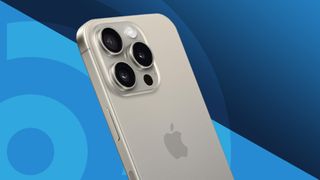
1. The list in brief
2. Best overall
3. Best iPhone
4. Best Samsung
5. Best Pixel
6. Best budget
7. Best value
8. Best compact
9. Best foldable
• FAQs
• How we test
Deciding on, and buying, the best phone for your needs gets increasingly more difficult with each passing year, as new options consistently emerge. The top flagship handsets from Apple, Samsung and Google are all excellent handheld marvels with imposing power, but they often also carry a price tag to match, so knowing where to invest your money is super important (if you are on a budget, then be sure to check out our guide to the best cheap phones).
With this in mind, we’ve put all manner of phones to the test – assessing their price, design, display, performance, cameras and more – in order to determine how they stack up to the rest of the smartphone competition in Australia.
Whatever your needs, desires and budget, there’s guaranteed to be an option right for you in our list of the ten best phones in Australia below.
The best phones in Australia: quick list

The best phone overall
As an all round package, the iPhone 15 Pro is one of the best, thanks to its compact size, superfast A17 Pro chipset, excellent cameras and beautiful titanium design.
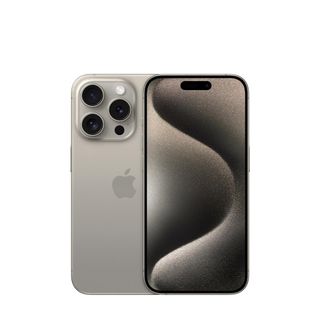
The best iPhone
It's expensive, but if you can afford it and you appreciate the bigger screen, the iPhone 15 Pro Max's A17 Pro chipset and 5x periscope zoom lens make it the best overall choice for iOS fans.

The best Samsung
Samsung somehow managed to improve upon what was already an incredible phone. The Galaxy S24 Ultra is an ultra-powerful device that has ushered in a new titanium design and 5x telephoto camera, along with a suite of AI smarts that has set a precedent for future smartphones.
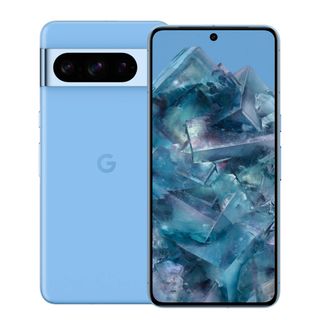
The best Pixel phone
Just as we expected, the Pixel 8 Pro now replaces its predecessor as the best Pixel option. It has the best cameras Google has ever given us, and some incredible machine learning smarts.
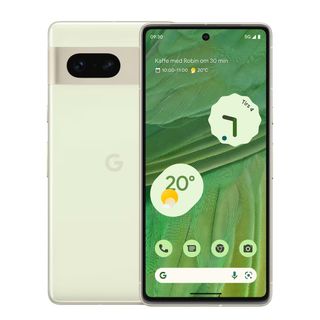
The best budget phone
Now that it's seen a price drop, the Pixel 7 becomes our new budget phone of choice. Offering far more in the way of performance and cameras compared our previous pick, the Pixel 6a, it's a far more solid ch

The best value phone
A superfast A16 Bionic chipset, USB-C port, 48MP main camera and the Dynamic Island ensure that, for the first time in a long while, Apple’s latest standard iPhone offers cracking value for money.
Reveal the next 2 products...
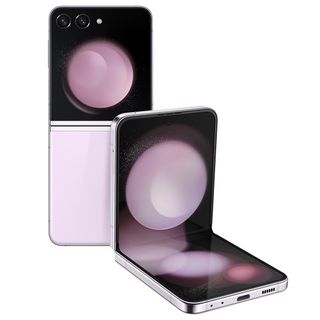
The best compact phone
Samsung's latest Flip phone asserts its dominance in the newly competitive category, finally giving people a genuine reason to make the switch to flip.
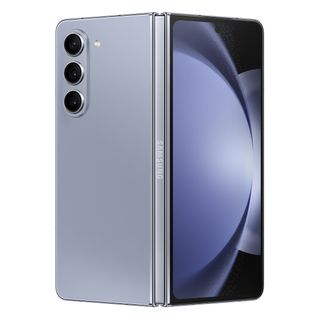
The best foldable phone
The Fold 5 sees Samsung continue its winning streak in the foldable space, too. A new design and much-upgraded internals still make it the one to beat.
The best phones in Australia 2024
Why you can trust TechRadar
Below you'll find full write-ups for each of the best phones in our list. TechRadar's team of phone experts has tested each on extensively, which allows us to say categorically which ones are genuinely worthy of your attention.
The best phone for most people
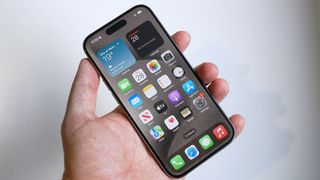
Specifications
Reasons to buy
Reasons to avoid
✅ You want the best 6.1-inch phone around: The iPhone 15 Pro bundles the best of Apple's mobile technology into a palm-friendly, titanium-clad package.
✅ You want photos with less work: The iPhone 15 Pro doesn’t have the absolute best camera tech available, but Apple makes taking photos super simple for everyone. The phone's highly capable 48MP main lens will be more than enough for most people.
✅ You want an iPhone with USB-C: Like its larger sibling, the iPhone 15 Pro is equipped with a USB-C port for faster data transfer and better compatibility than its predecessor.
❌ You want more zoom power: The iPhone 15 Pro's maximum 3x optical zoom is starting to seem more quaint than useful. Samsung (and Xiaomi) owns the super-zoom space.
❌ You want better charging technology: Despite offering strong battery life and USB-C, the iPhone 15 Pro lacks the fast charging capabilities of similarly-priced handsets.
If you prefer the palm-friendly size of Apple's 6.1-inch iPhones to its supersized Max devices or the even bigger Samsung Galaxy S23 Ultra, then the iPhone 15 Pro is the best phone money can buy right now. The 15 Pro Max may have a slightly superior 5x periscope zoom lens, but in every other department, the iPhone 15 Pro can be thought of as exactly the same phone for a more digestible price.
For starters, this is an undeniably beautiful handset. The iPhone 15 Pro boasts a gorgeous titanium design that can withstand unwelcome drops more effectively than its predecessor, and the addition of a USB-C port makes this a more versatile device, too (in terms of both charging and compatibility).
The iPhone 15 Pro's stunning 6.1-inch Super XDR OLED screen (with ProMotion) is unchanged from the (also excellent) iPhone 14 Pro, but this time, everything is underpinned by Apple's all-new A17 Pro chipset, which delivers console-level gaming performance and supreme multi-tasking capabilities.
On the back, you're getting a 48MP quad-pixel main cameras lens, alongside a 12MP ultra-wide lens and 12MP telephoto lens that's capable of 3x optical zoom. As mentioned, that last figure is bettered by the iPhone 15 Pro Max (not to mention the Galaxy S23 Ultra), but the iPhone 15 Pro's overall camera setup still ranks among the best on the market; everyday users will find more than enough photographic power here.
Sure, the $999 / £999 / AU$1,849 asking price is high, but the iPhone 15 Pro will almost certainly see you through the next four or five years without issue.
Read our full iPhone 15 Pro review
- Check out the latest Apple promo codes for this month's best deals
The best iPhone

Specifications
Reasons to buy
Reasons to avoid
✅ You want the biggest and best iPhone: The iPhone 15 Pro Max is the most technologically advanced iPhone Apple has ever made, period.
✅ You want the most powerful phone: Apple's A17 Pro chipset is more powerful than anything else on the market, so much so that you're able to play console-quality games on the iPhone 15 Pro Max.
✅ You want a versatile camera system: In addition to its 5x optical zoom capabilities, the iPhone 15 Pro Max features the smartest portrait photography tech around.
❌ You want the best mobile zoom camera: The addition of 5x optical zoom on the iPhone 15 Pro Max is great, but it's still technically not the best. Samsung's 10x optical zoom on the Galaxy S23 is better.
❌ You need fast charging: The iPhone 15 Pro Max offers reassuringly-solid battery life and functionally-fine charging, but rivals from every angle offer much faster speeds.
The iPhone 15 Pro Max is indisputably the best iPhone money can buy in 2023, so for Apple fans with a bottomless supply of cash, this is the top choice. The smaller iPhone 15 Pro is also an exceptional handset that's worth considering if you prefer its more practical 6.1-inch size, but since the larger iPhone 15 Pro Max offers a 5x periscope zoom lens, the latter phone is the objectively superior device.
In addition to that periscope zoom lens – which marks the first of its kind on an iPhone – the iPhone 15 Pro Max boasts a 48MP quad-pixel main lens and a 12MP ultra-wide lens, making it the most capable and versatile iPhone yet for mobile photographers.
Beyond its photography capabilities, the iPhone 15 Pro Max packs an excellent 6.7-inch Super XDR OLED screen (with ProMotion), a gorgeous titanium design, a USB-C port and Apple's all-new A17 Pro chipset, which delivers mobile gaming performance comparable to some high-end PCs, should you be so inclined.
In other words, when it comes to iPhones, the iPhone 15 Pro Max is the best of the best, but you'll have to pay handsomely for the privilege of owning one, and Samsung's similarly priced Galaxy S23 Ultra actually has slightly better cameras.
Read our full iPhone 15 Pro Max review

Specifications
Reasons to buy
Reasons to avoid
✅ You want the most feature-packed phone: The Galaxy S24 Ultra packs in every feature in the history of mobile devices, including wireless charging, water resistance, and even a stylus – but it can also replace your laptop, camera and tablet.
✅ You're onboard with AI: The S24 Ultra's suite of AI smarts, such as Circle to Search and Live Translate will likely be useful for many, and we expect more features to arrive in the future.
❌ You don't like big phones: The S24 Ultra is smooth, and curved, and also very, very big. It's so big that it can hide a full stylus and a huge battery inside and remain water resistant. With a case, it's a behemoth.
❌ You hate One UI: Samsung messes with Android, and though One UI gets better every time we use it, Google's own Pixel version is still simpler and more refined.
Samsung has stuck to a tried and tested design formula with the Galaxy S24 Ultra it seems: it looks nigh-on identical to both its S23 Ultra and S22 Ultra predecessors. But that's pretty much where the similarities end, because Samsung's latest is a far more powerful – and far smarter – beast entirely, so much so it is realistically the best phone you can buy right now if you're not an iOS loyalist.
To start, the S24 Ultra has the Qualcomm Snapdragon 8 Gen 3 at its core, and this already impressive processor gets a further boost thanks to a collaboration between Samsung and Qualcomm for the former’s new device. The result, which Samsung calls the 'Snapdragon 8 Gen 3 Mobile Platform for Galaxy', is a processor that can comfortable run multiple apps and games at once, without so much of a stutter. This new processor is also the brains behind Samsung's on-device Galaxy AI capabilities.
Truth be told, the screen and battery of the Samsung Galaxy S24 Ultra are pretty much identical to the model it replaces, but perhaps most importantly, the camera has received a small but not insignificant upgrade. While the insane 200MP wide sensor makes a comeback, you'll now find a new 50MP 5x zoom periscope camera (which replaces the S23 Ultra's 10MP 10x telephoto lens). While the physical zoom capabilities have effectively been reduced, you'll be able to pick out far greater detail in the images you take and for our money, we'd take a more detailed photo over one that employs far too much zoom.
Naturally, the Samsung Galaxy S24 Ultra isn't a cheap phone, and you will have to dig deep if you want to own one. Be sure to check out our round-up of the best Samsung Galaxy S24 Ultra plans for the latest deals.
Read our full Samsung Galaxy S24 Ultra review
- Check out the latest Samsung promo codes for this month's best deals
The best Pixel phone
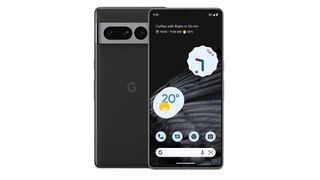
Specifications
Reasons to buy
Reasons to avoid
✅ Photography isn't your strong suit: The Pixel 8 Pro can fix whatever photos you have in your Google Photos library, even if you took them with a different phone in the past.
✅ You’re a die-hard Android fan forever and ever: Good news, Android fans, this phone will last longer than any other Android, seven years to be precise. This also makes it great from a sustainability perspective.
✅ You want a receptionist to answer your calls: The call screening feature really works (if you can find it), and it gives you a quick, written transcript of what your caller wants before you decide to answer.
❌ You want the absolute best cameras: While the Pixel 8 Pro is impressive, and the iPhone 15 Pro Max is a serious upgrade, nothing beats the Galaxy S23 Ultra for camera capabilities and quality.
❌ You are a journalist or reporter: The camera editing tools on the Google Pixel 8 Pro may create questions about credibility from the shots it makes, and the summary tool is factually inaccurate.
The Pixel 8 Pro is Google’s most ambitious – and best – Pixel yet. Some of the biggest changes compared to its 7 Pro predecessor lie in the camera department and sure enough, even pro photographers will find much to love here. The Tensor G3 chipset, custom built to run Google’s machine learning features, is also a headline grabbing feature. Google is so confident in this phone’s performance that it's promising an unprecedented seven years of major updates, which is longer than any other phone maker is currently supporting with its phones.
On the design front, the Pixel 8 Pro is more rounded on the corners than its predecessor, and more flat on the display, too. The result is a phone that is much, much easier to hold while simultaneously giving you a better view of your content. It is without doubt the nicest Pixel phone Google has made so far.
Aside from its internal power, the Pixel 8 Pro's display is its standout feature, and Google has even endowed it with its own branding: Super Actua. The Pixel 8 Pro can reach 2,400 nits at peak brightness, and still pumps out 1,600 nits when you aren’t in direct sunlight. In almost every way, the Pixel 8 Pro display beats that of the iPhone 15 Pro Max, which is no easy feat.
Compared to the iPhone 15 Pro Max, some photos look better when shot with the Pixel 8 Pro, but others, especially night pics and low-light images, look better taken with the iPhone. That’s surprising, but there are still some reasons for Google to brag. Only the Pixel 8 Pro has Magic Editor, which combines generative AI with Google's Magic Eraser to fix and change images with a little too much ease.
Read our full Google Pixel 8 Pro review
The best budget phone
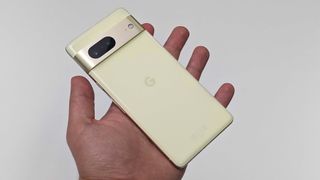
Specifications
Reasons to buy
Reasons to avoid
✅ You want a budget phone that's unique: There's no denying the Pixel 7 looks unlike any other phone on the market (aside from other Pixel devices) and while some people may be not be open to change, we love that the design of the Pixel 7 offers something totally fresh.
✅ You want help taking great pics: The Pixel 7 isn’t for pro photographers who need hundreds of megapixels and super-zoom. It’s for the rest of us, and it takes pics that are easily shareable, with great editing features to fix bloopers.
❌ You need great battery life: The Pixel 7 is far from a class-leader when it comes to battery life and charging speed, although admittedly, it's also far from the worst.
❌ You need a lot of storage: While you can get a 256GB storage option, this is the maximum Google offers. If you do need more storage, the only real solution is Google One cloud storage.
The Pixel 7a may have been the obvious choice here as the best budget pick, but now that the Pixel 7 is seeing some decent discounts, we feel it's worth paying that little bit more for a big boost in performance.
The Pixel 7 looks like the Pixel 6 and the Pixel 8, but there are different colour options every year, and we like the lemongrass hue offered for this phone. The camera bar is metal and tinted depending on the colour you buy, and it has a great look for a budget device. Plus, it is rated IP68 for water resistance, which is a huge improvement over the previous model.
With the Pixel 7 you're getting the same 50MP main camera as the Pixel 7 Pro, as well as a similar 12MP ultra-wide. You also get the same 10.8MP punch-hole selfie snapper, plus 4K video recording up to 60fps and support for 10-bit HDR video capture for better colours, brightness and contrast. While the hardware is interesting, the Pixel camera experience is really more about the processing and software, which is here supported by Google's competent Tensor G2 chip.
The Pixel 7 has a Full HD+ resolution and 20:9 aspect ratio, and it runs at up to 1000 nits in normal use, and can push to 1400 nits at its peak (25% brighter than that of the Pixel 6's display) for better visibility in bright surroundings. We had no trouble getting the phone to last all day, and ended most days at around 15% battery.
Read our full Google Pixel 7 review
The best value phone
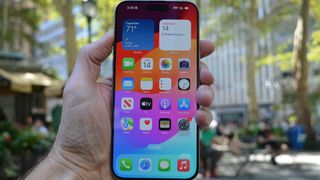
Specifications
Reasons to buy
Reasons to avoid
✅ You want an affordable iPhone: The iPhone 15 strikes a nice balance between price and cutting-edge features, so you don't feel like you're missing out.
✅ You want a camera upgrade: Between the new 48MP main camera and some excellent portrait photography capabilities, the iPhone 15 offers strong camera specs for the price.
❌ You want a bigger phone: The iPhone 15's 6.1-inch screen might feel cramped if you currently own a Pro Max or Plus.
❌ You want bigger zoom: The 2x optical zoom on offer here doesn't quite compare to 3x optical zoom on the iPhone 14 Pro, iPhone 15 Pro or Samsung Galaxy S23.
Apple's newly released iPhone 15 marks the most significant step up for a base iPhone in several years, and earns its place as the best value phone money can buy in 2023.
If you're not concerned with the titanium sides, 120Hz scrolling or high-spec zoom photography of Apple's pricier Pro models, the standard iPhone 15 offers pretty much everything you could want from a flagship phone, but for significantly less money.
Here, you're getting a 6.1-inch Super XDR OLED display, a superfast A16 Bionic chipset, a USB-C port, a supremely capable 48MP main camera and Apple’s fancy digital screen cut-out, the Dynamic Island, all delivered in a sleek and eye-catching design package.
In recent years, Apple's standard models have felt like minor upgrades that pale in comparison to their respective Pro-level counterparts, but the iPhone 15 bucks that trend by being a genuinely great value product.
Read our iPhone 15 review
The best compact phone

Specifications
Reasons to buy
Reasons to avoid
✅ You want a small phone with a big screen: The flipping nature of the Z Flip 5 means you have the best of both worlds: a genuinely pocketable device, that opens up to deliver a bigger-screen experience
✅ You want a cool phone: This point isn't exclusive to the Z Flip 5, but it helps make the case that the resurgence of flip phones has finally hit cool status.
❌ You're on a tight budget: While the launch offers were aggressive, the cost of a Z Flip 5 now is a considerable investment, especially since it doesn't quite rival the very best flagships.
❌ You want the best-looking clamshell: This one is subjective, admittedly, but in our opinion the Motorolz Razr 40 is the better looking flip phone in 2023.
Until the launch of the Samsung Galaxy Z Flip 5, it was the Motorola Razr 40 Ultra that would've walked away with the title of best compact phone. But, with the Samsung now out in the world, it has proven itself to be the superior device.
In the Flip 5, Samsung has resolved many of the flaws we found in previous generations, namely introducing a hinge that allows both halves to fold perfectly flat. It's also managed to do this while maintaining its IPX8 water-resistance rating, which is no easy feat.
Elsewhere, the cover display has finally increased to a usable size, to the point where you can carry out the majority of everyday functions and tasks on it, without having to flip the phone open and continue using the interior display. Speaking of which, the interior display is largely unchanged from the Z Flip 4, maintaining its 6.7-inch size and Full HD+, 2640 x 1080 resolution. Once again it's capable of supporting up to 120Hz refresh rate when needed, and can go as low as 1Hz to help conserve battery power.
It might not have changed much, but that's totally fine in our opinion, as it's a tremendous display that serves up great colours, contrast and viewing angles. Perhaps most crucially, to instil at least some difference between models, Samsung has increased the peak brightness to 1,750 nits (up from 1,200), meaning outdoor viewing is easier than ever.
Camera-wise, you'll find the same hardware here as you would in the Galaxy Z Flip 4, but Samsung has introduced a new Super Clear Lens which claims to reduce flare (which can affect contrast). There is an improvement in images taken on the Flip 5 compared to its older sibling, which can also be attributed to the new Snapdragon 8 Gen 2 processor running the show.
Finally, the battery has been vastly improved compared to the outgoing Flip model, despite the hardware being pretty much the same. The 3,700mAh unit teams up with a full suite of more power efficient internals to deliver battery life that can actually be considered "all-day."
Read our full Samsung Galaxy Z Flip 5 review
See the best Samsung Galaxy Z Flip 5 telco plans
See the best Samsung Galaxy Z Flip 5 outright deals
The best foldable phone
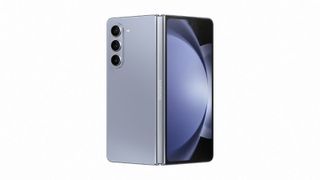
Specifications
Reasons to buy
Reasons to avoid
✅ You're ready to try a foldable phone: Even though the Google Pixel Fold has a better cover display, Samsung's Z Fold 5 is the more refined foldable experience, especially when you unfold it and look at the main screen, which cuts down the bezel and gives you a more expansive display.
✅ You want quality photography: Samsung didn't change the cameras on the Z Fold 5, but they're still a formidable collection of lenses, now backed by the powerful Qualcomm Snapdragon 8 Gen 2 chipset.
❌ You're on a budget: At $1,799, this is one of the most expensive Android phones on the market. At the very least, look for deals before you buy.
❌ You demand the best in camera optics: As above, the cameras here are great, but for the best in Samsung photography, look to the Samsung Galaxy S23 Ultra, which has higher megapixels and 10x optical zoom.
The flip and fold (re)revolution hasn’t lost any steam since it began a few years back, with the latest in Samsung’s Galaxy Z Fold line offering more than just the extra screen space even if the price point might prove a sticking point for would-be adopters of the Fold’s novelty.
To start, its 7.6-inch AMOLED display with 2176 x 1812 resolution is a notable improvement on the Fold 3 (although unchanged from the Fold 4), with an adaptive refresh rate of 1 to 120Hz giving it added value for avid mobile gamers especially. The size of the cover screen remains the same, and so some may still find it a bit to narrow for regular use.
What has changed with this iteration of Samsung's foldable is the silicon inside. As with the Flip 5, the Fold 5 also gets the Snapdragon 8 Gen 2 'for Galaxy' SoC, bringing it in line with the excellent Galaxy S23 Ultra at the top of this list. We thought the performance of the Fold 4 was a little mediocre considering the price, and that it wasn't able to compete with more affordable flagship devices. That is no longer the case here, thankfully.
Battery life has also improved, and our reviewers managed to get all-day usage from it without any real trouble. Recharging is also pretty fast, just as long as you have a 65W power adapter.
Cameras have remained unchanged, but thanks to internal hardware updates, images have never looked better. Not only are shots taken in good lighting improved, it's those that are taken in lower light that particularly impress.
The Samsung Galaxy Z Fold 5 is an impressive phone indeed, although there's no denying it is expensive. If you think a foldable phone is for you, however, then there's currently nothing better in Australia.
Read our full Samsung Galaxy Z Fold 5 review
See the best Samsung Galaxy Z Fold 5 plans in Australia
FAQs
What is the best phone in Australia in 2023?
As with anything, there might not be a necessarily objective 'best', as what phone might be best for you might not be the best for the next person. However, when it comes to the most impressive power and performance, the iPhone 15 Pro is a clear pick for top spot.
The Samsung Galaxy S23 Ultra is essentially on par with Apple's latest, with the deciding factor for you likely coming down to which operating system you prefer. For us, we simply adore iOS 17 and find it to be far more user friendly than the latest Android equivalent, but there's also no denying just how impressive the the S23 Ultra is when it comes to photraphy.
For Apple fans, the iPhone 15 Pro and iPhone 15 Pro Max are the top options with their abilities to offer the familiarly dependable Apple performance qualities matched well by equally great hardware.
And, if neither of the big names take your fancy, the Google Pixel 8 Pro does more than enough to close the gap between the duopoly of Apple and Samsung and the rest of the smartphone market.
How to choose the best phone for you
Depending on the way you use your smartphone, there are likely to be one or more aspects of a device that are important to you.
If you want a hardy smartphone, you should check whether it has an IP rating – this will dictate how protected it is against dust and moisture. Also consider its material – ceramic is very fragile, as is glass, but plastic and metal can be more protective.
If you stream a lot, you might want a good-looking display. Bigger, up to 6.8 inches, might be useful for you, as will a resolution over 1080p. Refresh rates of 90Hz or 120Hz also ensure that motion looks smoother.
Battery life can be a pain for people, though capacity doesn't always dictate how long a mobile lasts. A phone needs to last at least a day to be useful for most people, though some go up to two days.
Charging speed is also important, and anything of 65W or up is good, though some phones now offer over 120W. The best phones power up in under an hour, and some even take less than 30 minutes.
Camera quality is hard to convey through a specs list, so you'll have to rely on our analysis and testing to see how good they are – but it's always useful to find a camera phone with multiple lenses and modes.
How we test
Every phone on this list was subjected to a full TechRadar review, and therefore our entire testing process. The core part of this process involves using the phone as our own for one week or more. We slot our SIM card in, use the device for social media, entertainment, photography and other normal tasks.
This is so we can emulate how you'll use the device if you buy it. It helps us understand all the quirks of a phone that you don't notice if you just leave the device in a lab and test it. Of course, we do some lab tests, too, for some direct comparison.
So, we'll game and we'll do benchmark tests to work out how powerful a phone is; we'll time a phone when it's charging but also just work out how powering fits into our morning routine; we'll test how long a phone takes to run down, but also just handle it day-to-day for a long period of time.
Our main areas of focus in our review are the phone's design, display, cameras, performance, software and battery life, though of course its price is also important for our final judgement.
You're at the end of the guide, but that doesn't mean we can't help you still - if you're stuck on which model is for you, we've got a tool that can compare all the phones together and you can decide which one suits you best based on the cost.
If you want to get all the info, then use the tool below or check out our full mobile phone plans page.
Get daily insight, inspiration and deals in your inbox
Get the hottest deals available in your inbox plus news, reviews, opinion, analysis and more from the TechRadar team.

James is a senior journalist with the TechRadar Australia team, covering news, analysis and reviews in the worlds of tech and the web with a particular focus on smartphones, TVs and home entertainment, AR/VR, gaming and digital behaviour trends. He has worked for over six years in broadcast, digital and print journalism in Australia and also spent time as a nationally recognised academic specialising in social and digital behaviour trends. In his spare time, he can typically be found bouncing between one of a number of gaming platforms or watching anything horror.
- Max LangridgeStaff Writer
Most Popular



